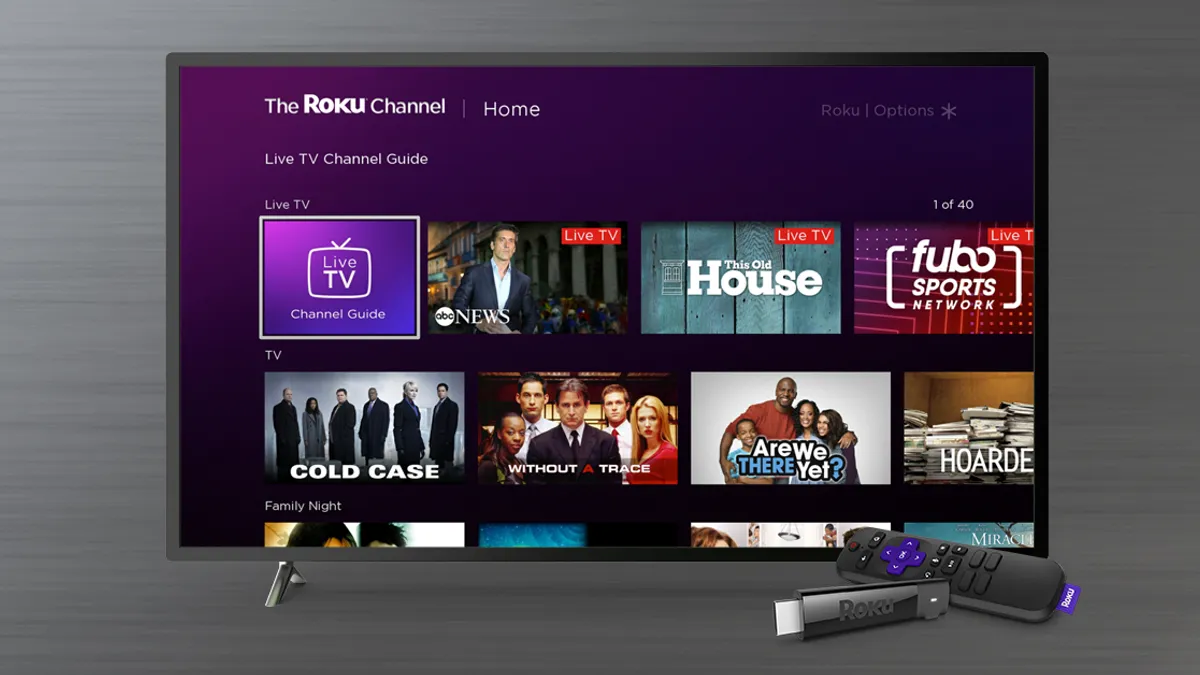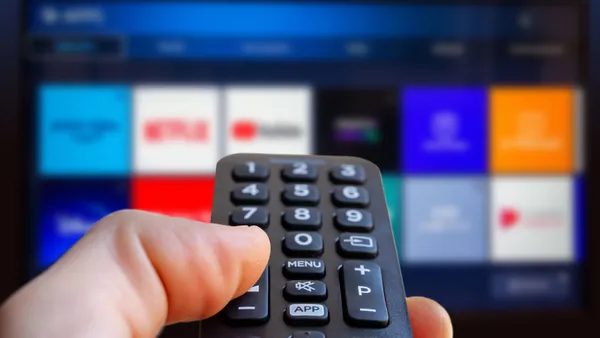Dive Brief:
- Roku will acquire Nielsen's Advanced Video Advertising (AVA) business, which includes automatic content recognition (ACR) and dynamic ad insertion (DAI) technologies, as it seeks to accelerate the launch of an end-to-end DAI solution for TV programmers, per an announcement.
- As part of the new partnership, Roku's OneView ad platform will integrate Nielsen's "always on" Digital Ad Ratings (DAR) for advertisers, and allow publishers to use Nielsen's Digital Content Ratings (DCR). In addition, the companies will integrate Nielsen ad and content measurement products into the Roku platform as Nielsen looks to beef up Nielsen ONE, its cross-media measurement solution.
- The "strategic alliance" seeks to help both companies as streaming video becomes an increasingly important part of the TV landscape. The acquisition is expected to close in the second quarter of 2021, with Roku adding Nielsen AVA employees and Nielsen's ACR and DAI patents to its portfolio.
Dive Insight:
With the partnership, Roku looks to deliver the benefits of streaming TV advertising to traditional TV, as tens of billions of dollars continue to be spent every year on the format, Louqman Parampath, VP of product management at Roku, said in a statement.
"Roku will bring the promise of DAI to the market for the first time ever at scale — providing better targeting and measurement for advertisers, creating easy integration and additional revenue opportunities for programmers’ ad sales teams, and improving the TV experience for viewers," Parampath said.
The DAI solution that Roku seeks to launch could make it a key platform for marketers interested in addressable TV advertising, which is expected to reach $3.6 billion in the U.S. by 2022, up 75% from August 2020, according to eMarketer data cited by Variety.
For Nielsen, the partnership promises to expand the footprint of nearly 100 million smart TVs and other devices on which the company will be able to measure and better monetize addressable advertising. Adding measurement of ads and content on Roku devices could "accelerate the path to a single, de-duplicated cross-media currency," Scott N. Brown, Nielsen's general manager of audience measurement, said in the statement.
The partnership comes on the heels of Roku reporting record revenue as its audience continued to grow while consumers spent more time at home due to the pandemic. The company's fourth-quarter revenue jumped 58% from a year earlier to $649.9 million, and the revenue for its platform business that includes advertising sales surged 82% to $471.2 million.
In addition, Roku's media sales and ad-buying platform OneView also saw rapid growth in the quarter. Spending on over-the-top (OTT) impressions through OneView more than doubled, while spending on impressions delivered on the Roku platform in OneView more than quadrupled in 2020. The OneView Ad Platform was launched last year, combining Roku's ad tools with the identity and attribution tools from demand-side platform (DSP) Dataxu, which Roku acquired in 2019.
OneView is the company's "bread and butter," Kristina Shepard, Roku's head of East Coast sales and agency partnerships, said on a virtual panel hosted by MediaRadar last month. The ad platform is the only way to deliver what advertisers are looking for with regards to reach and frequency, the ability to pivot to different platforms and the need to drive business outcomes, she explained.
"[Marketers] get that bird's eye view to help with frequency issues," Shepard said of OneView. "In terms of addressability, making sure that the audience is really reaching only their core consumer versus a lot of the waste that they're getting from linear, and then most importantly, actually measuring against business outcomes."
While the Roku and Nielsen partnership is concerned with traditional TV, many marketers, brands and agencies are "desperate" to find an alternative to linear TV, making the enhancements to OneView even more important for the platform, Shepard said.
"The [gross ratings points] are not unique [on linear], the frequency is super high, the audience has a median age of 60. They need a replacement very badly, and so we are a great alternative, having that first-party customer relationship so that addressability is available on every single impression that we run and monetize on the platform," Shepard said.















